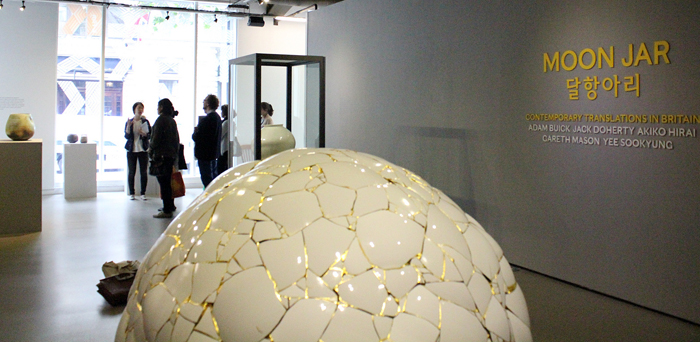This tea bowl has been based around the wabi sabi concept, although it does not have perfect edges and does not have a perfectly circular opening it is still beautiful. It looks very balanced and precious. Although 'rough and ready' it seems extremelydelicate as if you would fell the need to be extrememly careful when holding it. This may be due to its aged and precious appearance. (Azuchi-Momoyama Period, 16th Century)
Contemporary artists whose work displays qualities of the wabi sabi aesthetic.
Moon Jars embrace the Modernist principles of simplicity, truth to materials, form following function, and the idea that less is more. Jack Doherty said. “I was very moved by the experience of an object which was different and strange in its imperfection, both wrong and right at the same time.” His moon jar totally contradicts all the principles and basis for a traditional monn jar. Simplicity, perfection and strong form. His moon jar displays the wai sabi concept, a contrast between the messy broken/ruined texture with the moon jar form. He even uses gold as a 'kintsugi' repair. The opposing aethetics of the beautiful gold and muddy colours works extrememly well to demonstrate that beauty is not always perfect.
BROKEN, WORN, DAMAGED, DRIPPING, BLUR OF COLOUR AND TEXTURE, DISTRESSED.
Here is a heat transfer dye design I did trying to replicate the pattern on the moon jars, I am really pleased with how it has turned out, the colours look very rusty.
Here is a photo I took of an eroded metal roof I saw in an abandoned building in Norfolk
I tried to achieve a similar effect using paint. I used the side of a cucumber to print and roll the paint onto the paper.
I think the effect is beautiful, the colours all compliment each other and there is a very organic quality to the pattern.
"When the Japanese mend broken objects they aggrandize the damage by filling the cracks with gold. They believe that when something's suffered damage and has history it becomes more beautiful"- Billie Mobayed
'Kintsugi' means the art of repairing teaware. (Kintsukuroi the art of repairing)
Yee Sookyung (below) used bits of unwanted white pottery to create her cermaic work. Yee glued each fragment indicidually as if she were solving a jigsaw puzzle. The seams are covered with 24-karat gold leaves. another example of how Kintsugi has inspired contemporary designers.











No comments:
Post a Comment